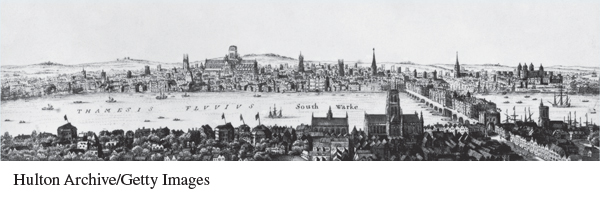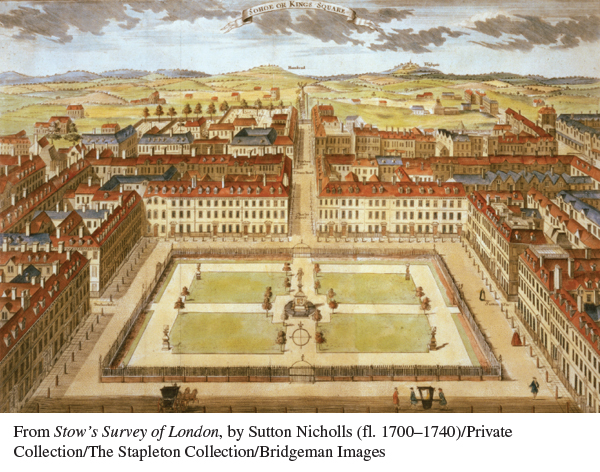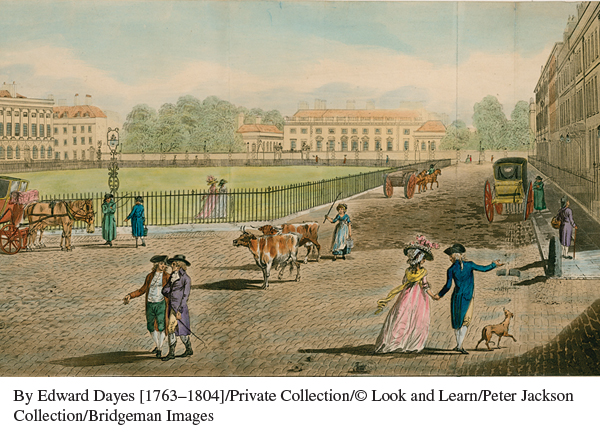A History of Western Society: Printed Page 564
Living in the Past
The Remaking of London
T he imperial capital of London dominated Britain and astonished the visitor. Equal in population to Paris with 400,000 inhabitants in 1650, London grew to 900,000 by 1800, while second-
In 1666 the Great Fire of London destroyed about 80 percent of the old, predominantly wooden central city. Reconstruction proceeded quickly, with brick structures made mandatory to prevent fires. As London rebuilt and kept growing, noble landowners sought to increase their incomes by setting up residential developments on their estates west of the city. A landowner would lay out a square with streets and building lots and lease the lots to speculative builders who put up fine houses for sale or rent. Soho Square, first laid out in the 1670s and shown below as it appeared in 1731, was fairly typical. The spacious square with its gated park is surrounded by three-
As the suburban villages grew and gradually merged, the West End increasingly attracted the well-



QUESTIONS FOR ANALYSIS
- Examining the picture shown at left, how would you characterize London before the Great Fire?
- Compare the paintings of Soho and Bloomsbury Squares. How are they complementary? Why did the artist choose to include a milkmaid and her cows in the illustration of Bloomsbury Square?